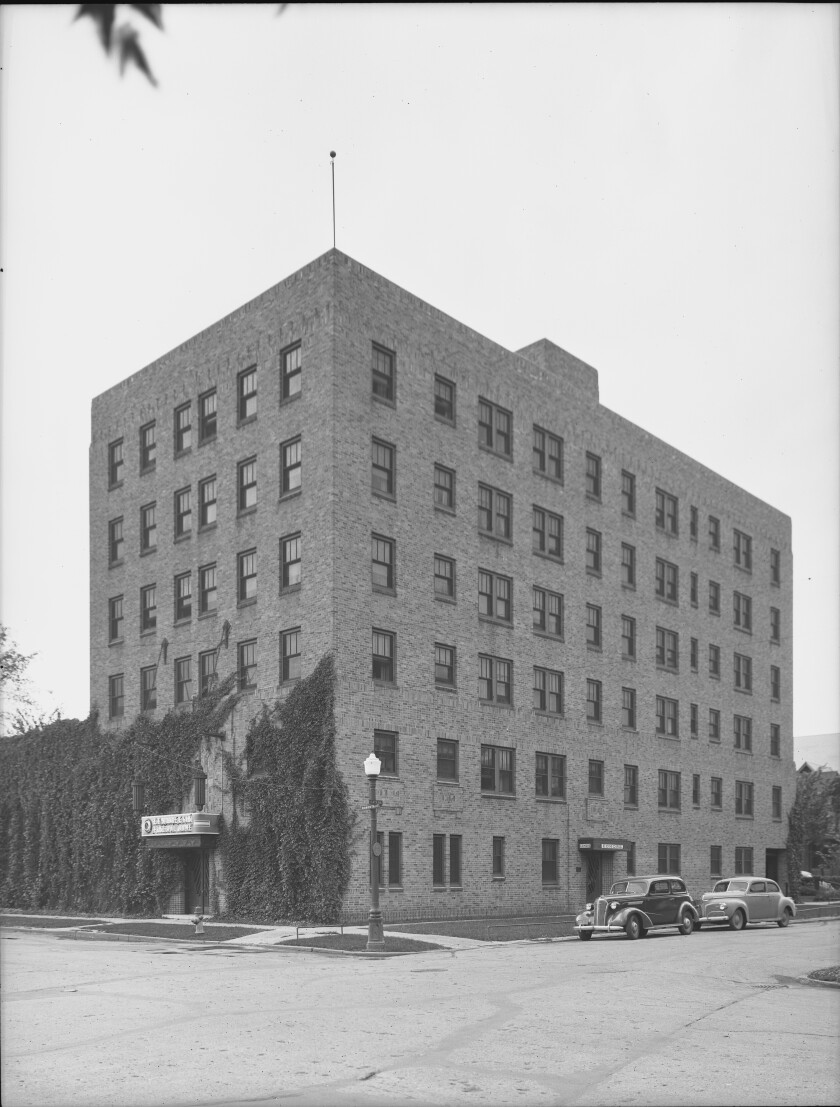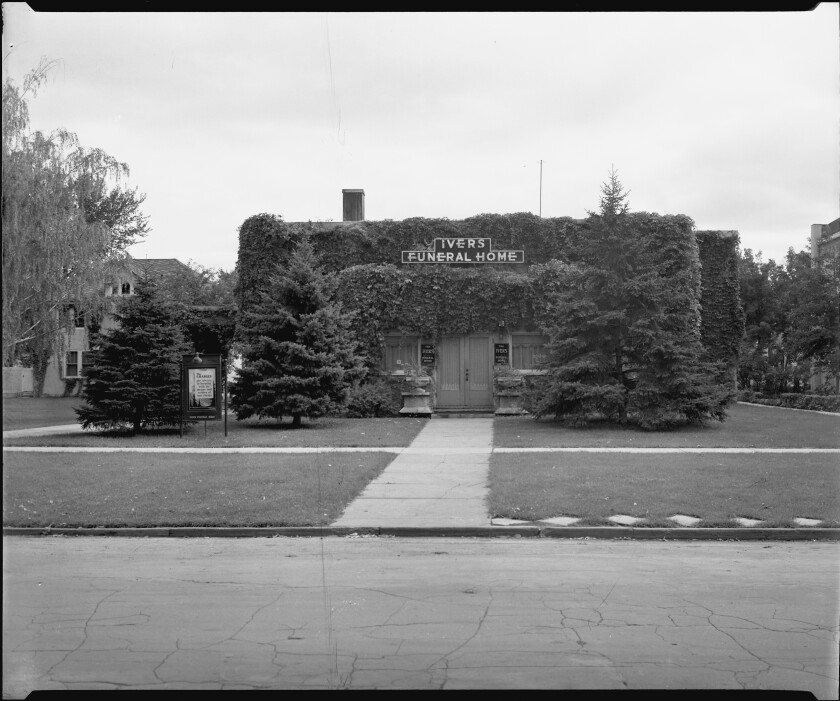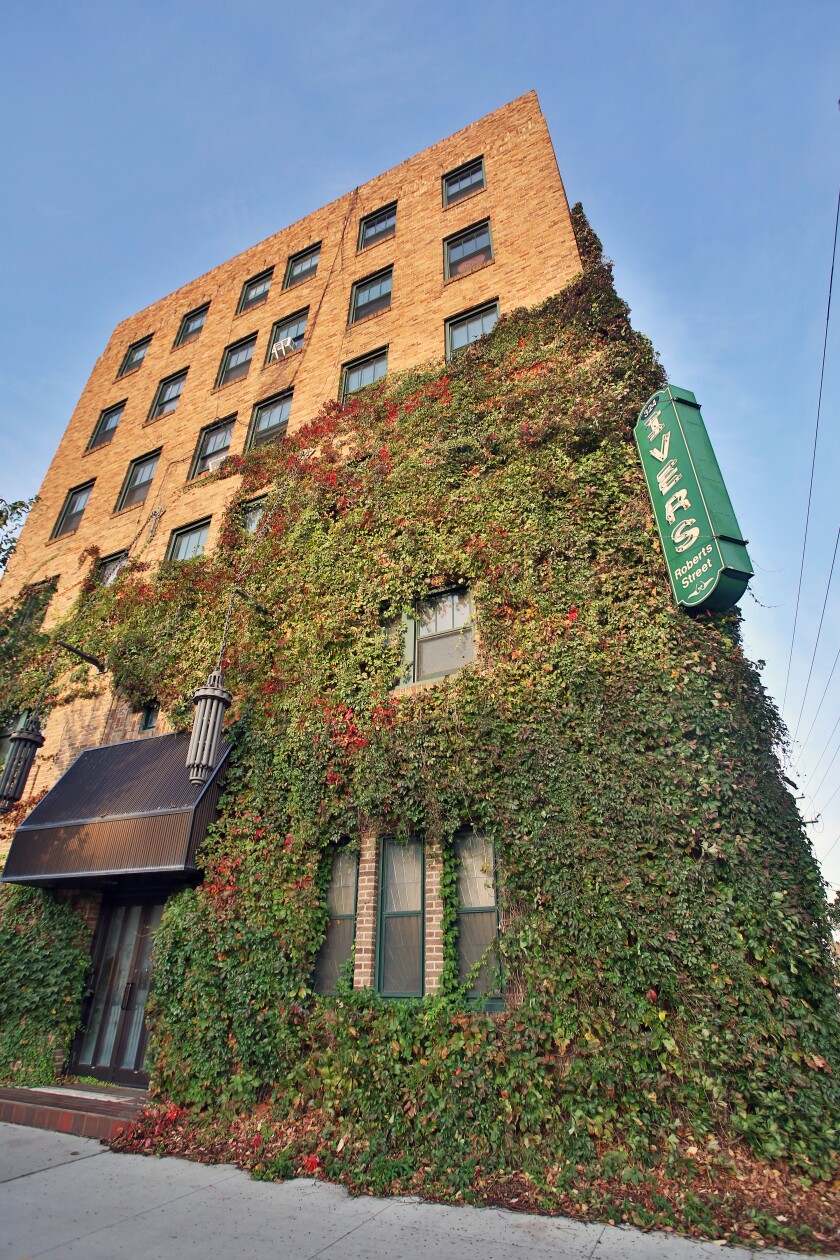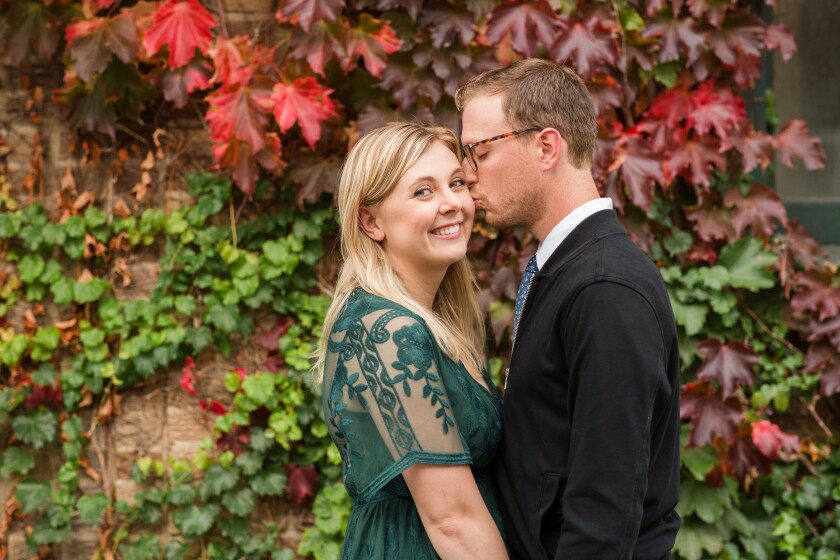[ad_1]
FARGO — Many buildings downtown have cemented their place in the city’s history because of the people or businesses they represent. But the most iconic quality of one such building has far less to do with the structure and who built it and much more to do with what grows on it.
The Ivers Building was constructed in 1929 not by its namesake, but rather by a man named Edwin Francis Moore.

Contributed / Institute for Regional Studies, NDSU, Fargo (2146.17.1)
Moore was a funeral director in Fargo who established his business at 622 Second Ave. N. in 1913 and then moved to a two-story building at 113 Roberts Street (currently home to Gallery 4 Fargo). By the 1920s, he was looking to grow his business so his son Edward could eventually take over.

Contributed / Institute for Regional Studies, NDSU, Fargo (2023.26.2)
Moore hired
prolific local architect William F. Kurke,
whose resume at that time included the
the top two floors of the
and Morrill Hall at North Dakota State University. Kurke would eventually
design North Dakota’s capitol building
as well as other downtown landmarks like the First National Bank, the Civic Arena and more.
Moore moved his business a couple of blocks north into the six-story cream brick building which included a chapel on the south side with vaulted ceilings and stained glass windows as well as 34 apartments of various sizes in the upper floors, which he named after himself — the Edmore Apartments. In November 1929, Moore hosted a formal opening and invited visitors who remarked it was “one of the finest in this section of the country” according to a Nov. 14, 1929, Forum article.
Perhaps to emulate the grandeur of old brick buildings common among the ivy league schools, Moore planted ivy on the east wall of his new building and let it grow.
Meanwhile, Ralph Ivers and Olive Pederson had met while attending North Dakota State School of Science (now North Dakota State College of Science) in Wahpeton and married in June 1929.
A few months later, the economy collapsed, and Fargo funeral home director Oscar Johan “O.J.” Hanson hired both to work for him as apprentices, recalled their daughter Lois Altenburg, 86.
His funeral home at
The upper level was converted to an apartment, where the newlyweds lived, Altenburg said. The experience also gave them insight into what it takes to run a funeral home and manage apartments, a skill they would put to good use in the near future. They watched Moore’s building rise from the ground across the street in 1929, perhaps dreaming of owning their own funeral home one day soon.

Contributed / Institute for Regional Studies, NDSU, Fargo (2023.26.1)
In 1931, the couple passed the state exam and became licensed morticians, according to a Sept. 3, 1949, Forum article. The next year, the Ivers purchased a funeral home at 912 Third Ave. S. in Fargo, which
had built around 1910. According to an Aug. 14, 1932, Forum article, the Ivers had worked for the most recent owner C.F. Hamilton after Wasem moved to Los Angeles. Within five years, the Ivers had remodeled the building and added apartments to their building as well as a home nearby where the Ivers family lived, Altenburg said.
In 1948, Moore’s son was no longer involved in the family business and Moore himself was looking to retire, so he sold his building the Iverses, who continued to operate both funeral homes, with one as their southside location and the new one as their northside location. But, in 1951, they sold the Third Avenue property to C.T. Tollefson, who moved his insurance business there.
“My mother was extremely good in business and just a brilliant woman, and my dad was very socially connected and joined every men’s club in town,” Altenburg said.
She also remembered the ivy on the building from the beginning. “That wasn’t unusual; at the time, lots of houses in Fargo had ivy on them,” she said.
Click on the yellow icons to read more about the location.
Tragedy struck in 1958 when Olive Ivers accidentally swallowed poison while preparing lunch at their lake house on Pelican Lake near Detroit Lakes, Minnesota, according to her July 21, 1958 obituary. The crushing loss of his wife and business partner meant Ralph Ivers wanted out of the funeral home business, though he continued to manage the apartments, Altenburg remembered.
Eventually Ralph Ivers remarried in 1967. As he neared retirement, he and his second wife Melva bought a new home in 1974 on
In 1981, Ivers named Concordia College — where he’d taken classes for two years before transferring to North Dakota State School of Science — as the beneficiary of a charitable remainder unitrust with the Ivers Building and other properties included in the agreement, according to an April 26, 1983, Forum article. That year, Concordia renamed its science building the Ivers Science Building in honor of Ralph M. Ivers and family for their “outstanding generosity,” according to the article.
Roger Landblom began working with Ivers in 1976 in the Ivers-Landblom Funeral Home and eventually purchased the building in the late 1980s. In 1992, Ralph Milton Ivers died, and his visitation was fittingly held in the funeral home he once owned and operated. In 2003,
John Ommen purchased the building from Landblom to manage the Ivers Apartments.
Today, RedPoint Properties manages the apartments.

David Samson/The Forum
While the ivy clinging to the Ivers Apartment building is beautiful, it’s also a bit confounding. That’s because the variety — Boston ivy — is a less winter hardy version compared to its relatives, Engelman ivy and Virginia creeper, which are common in the area, said Forum gardening columnist and NDSU Extension Agent Don Kinzler. It can climb thanks to tiny tendrils featuring suction cups on the ends called hold fasts.
“You don’t see Boston ivy often around town here,” Kinzler said. “Only a couple of houses around town have it but not many. You don’t see it on older buildings because it’s borderline in winter hardiness.”

David Samson/The Forum
He’s noticed that on particularly cold winters, the ivy on the Ivers will die back at the top and then has to regrow where the uppermost vines succumbed to winter.
It’s never caused any structural issues with the building but does need to be trimmed twice a year to keep it healthy, according to an Ivers Apartments manager.
“Vines have been crawling on brick buildings for hundreds of years, and those buildings aren’t falling down,” Kinzler observed.
While the ivy growing on the east side of the building is believed to be the same plant Moore started in 1929, the ivy on the north side is much younger, having been planted when Ommen purchased the building in the early 2000s.
The lush greenery provides an ideal background for many local photographers and even the casual selfie snapper.

Contributed / Alecs Kay Photography
Renee Clausen with Ten Little Chickens Photography frequently places her subjects in front of the ivy.
“I love the Ivers building. I love the character and history of these old, majestic buildings that have stood the test of time. The ivy that grows there is so thick and colorful. The rich greens in the summer and the vibrant reds in the fall before the first frost are so much fun to use as a backdrop,” she said in an email.
Another Fargo-based photographer named Alecs Larson with Alecs Kay Photography appreciates the variety the setting provides for her engagement and wedding sessions.
“It’s a unique location downtown because you get a mix of downtown and greenery,” she said. “The ivy is a beautiful green in the summer and then it’s full of amazing fall colors later in the year. Also, the main ivy-covered sides of the building face north and east, which is great since most photo sessions are scheduled a few hours before sunset. You get the beautiful light from the sunset, without the direct sunlight in faces or on the building.”
For Altenburg, knowing that her family’s namesake building continues to grace downtown Fargo and is appreciated by so many is a joy.
“Isn’t that just wonderful?” she replied.
Gallery: More photos from the Ivers Building
[ad_2]
Source link
